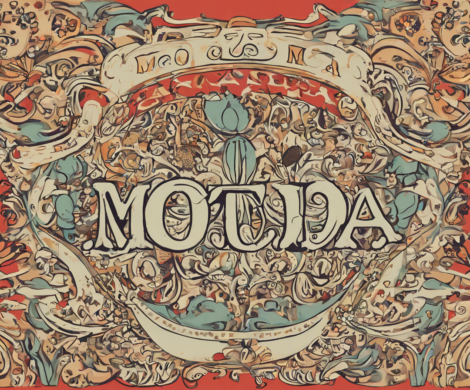Exploring the Latest Cacao Girl Trends and Tips
As the cacao industry continues to grow and evolve, there is a rising interest in the latest trends and tips for cacao enthusiasts and professionals alike. Whether you are a chocolate connoisseur, a pastry chef, or a cacao farmer, staying updated on the newest developments in the world of cacao can enhance your knowledge and skills in working with this beloved ingredient. In this comprehensive guide, we will delve into the latest cacao trends and offer valuable tips to help you navigate the exciting world of cacao.
Understanding Cacao Varieties and Origins
Cacao is derived from the beans of the cacao tree, which is native to the tropical regions of Central and South America. There are several varieties of cacao, each with its distinctive flavor profile and characteristics. The most common cacao varieties include Criollo, Forastero, and Trinitario. Criollo is prized for its fine flavor and aromatic qualities, while Forastero is known for its robust flavor and high yields. Trinitario is a hybrid of Criollo and Forastero, combining the best of both worlds.
When exploring cacao origins, it is essential to consider the terroir, climate, and growing conditions of the region where the cacao is cultivated. Cacao from different regions such as Ecuador, Peru, Madagascar, and Venezuela can exhibit unique flavor notes influenced by the local environment.
Emerging Cacao Trends
1. Single-Origin Cacao
Single-origin cacao has been a significant trend in the chocolate industry, highlighting cacao sourced from a specific region or plantation. This trend emphasizes the unique flavor profiles and terroir characteristics of cacao from different origins.
2. Bean-to-Bar Chocolate Making
Bean-to-bar chocolate making has gained popularity among chocolate artisans and enthusiasts, focusing on the process of making chocolate from cacao beans to the final product. This hands-on approach allows for greater control over the flavor and quality of the chocolate.
3. Cacao Nib Snacking
Cacao nibs are small pieces of crushed cacao beans, often used as a topping or ingredient in various dishes. As a healthier alternative to chocolate chips, cacao nibs have become a popular choice for snacking and adding a crunchy texture to desserts.
4. Cacao Sustainability
Sustainability is a growing concern in the cacao industry, with an emphasis on ethical sourcing, fair trade practices, and environmentally friendly production methods. Consumers are increasingly seeking out chocolate brands that prioritize sustainability and social responsibility.
5. Cacao Ceremonies
Cacao ceremonies have become a wellness trend, offering a mindful and ceremonial way to consume cacao for its potential mood-enhancing and heart-opening properties. These ceremonies often incorporate meditation, intention setting, and community sharing.
Tips for Working with Cacao
1. Quality Matters
When working with cacao, always prioritize quality ingredients. Opt for high-quality cacao beans, cocoa butter, and other cacao products to ensure the best flavor and results in your creations.
2. Experiment with Flavor Pairings
Get creative with your cacao-based recipes by experimenting with different flavor pairings. Cacao pairs well with ingredients like sea salt, vanilla, chili, citrus fruits, nuts, and spices to create unique and delicious combinations.
3. Temperature Control
Maintain proper temperature control when working with cacao to avoid issues such as chocolate seizing or cocoa butter blooming. Use a thermometer to monitor temperatures accurately during tempering and chocolate-making processes.
4. Storage and Shelf Life
Store cacao products such as chocolate bars, cocoa powder, and cacao nibs in a cool, dry place away from direct sunlight to preserve their freshness and flavor. Check the shelf life of each product and use them before they expire.
5. Sustainability Practices
Support sustainable cacao practices by sourcing cacao products from brands that prioritize ethical sourcing, fair trade certification, and environmental stewardship. By choosing sustainable options, you can contribute to the longevity and well-being of the cacao industry.
Frequently Asked Questions (FAQs)
- What is the difference between cacao and cocoa?
-
Cacao refers to the raw beans and products derived from the cacao tree, while cocoa is the processed and roasted form of cacao used to make chocolate.
-
How can I differentiate between various cacao percentages in chocolate?
-
The percentage on chocolate labels indicates the amount of cacao in the product. Higher percentages generally mean a more intense and less sweet flavor.
-
Are there any health benefits associated with consuming cacao?
-
Cacao is rich in antioxidants and may offer health benefits such as improved heart health, enhanced mood, and increased cognitive function.
-
Can I substitute cacao powder for cocoa powder in recipes?
-
Yes, you can substitute cacao powder for cocoa powder in recipes, but keep in mind that cacao powder has a more intense flavor, so you may need to adjust the amount accordingly.
-
What is the best way to temper chocolate at home?
- The seeding method is a popular technique for tempering chocolate at home, where you add small pieces of tempered chocolate (seeds) to melted chocolate to achieve the desired consistency.
Exploring the latest cacao trends and incorporating valuable tips into your cacao journey can enhance your appreciation for this versatile ingredient. Whether you are indulging in single-origin chocolates, experimenting with bean-to-bar techniques, or participating in cacao ceremonies, there is a world of possibilities waiting to be explored in the realm of cacao. Stay curious, creative, and conscious as you embark on your cacao adventures.





